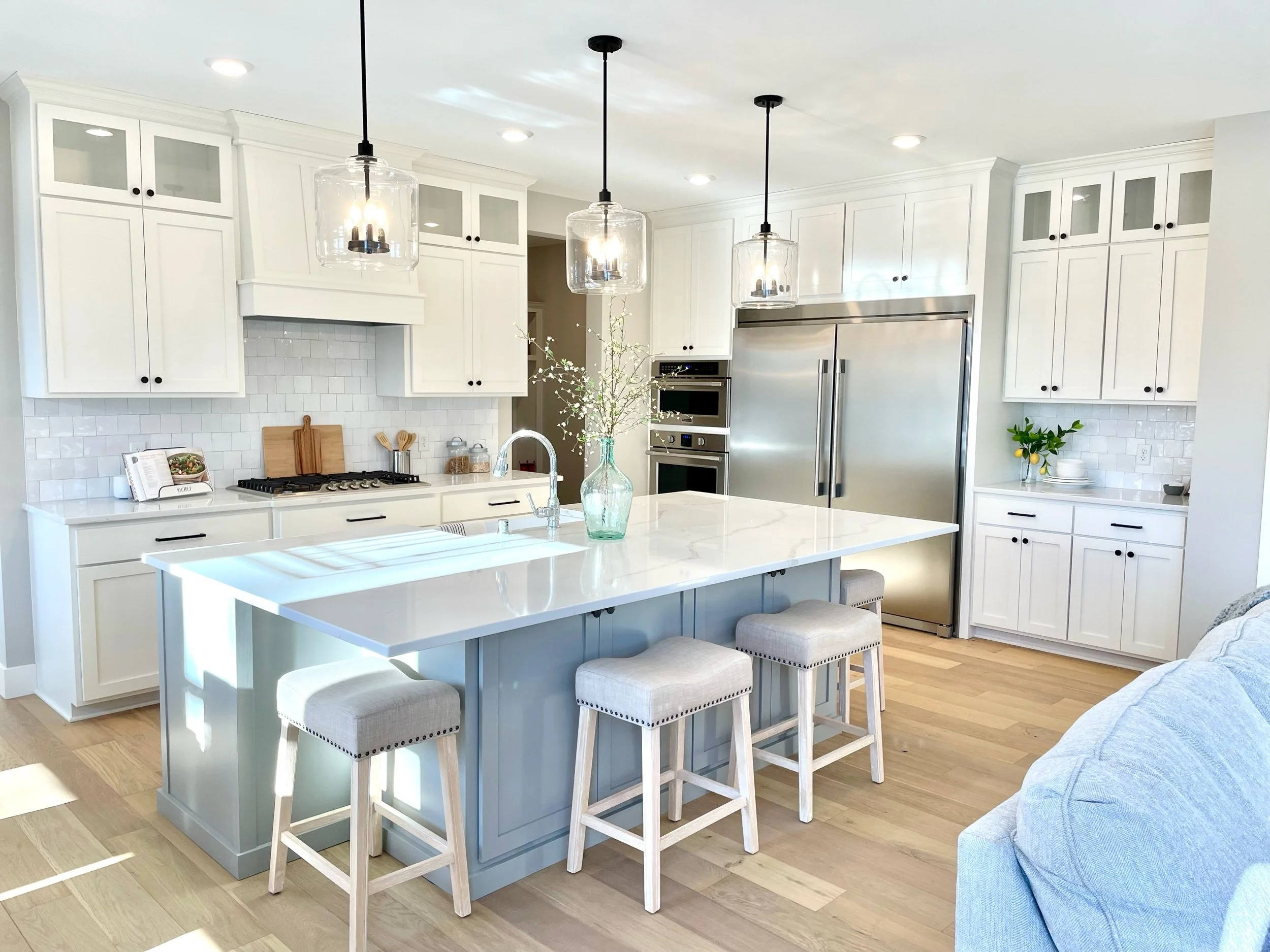Design 101 - simple tips for stunning results
So many times when I meet with a client for the first time I hear, “I don’t have a creative bone in my body.” Well let me tell you something, neither do I…it’s all in my head. Lol!! But seriously, design can be really overwhelming for a lot of people. What I like to help people with is drawing out their vision so that it can become a reality. Making sure that a space not only looks great, but functions well and in a way that is going to work with their lifestyle is of utmost importance.
Sure you can get bogged down with the overwhelming amount of choices, and sure it can be tricky to pull together a cohesive look, but I have put together some great tips that I think break down the process into smaller, more manageable parts. By choosing one thing, or one surface at a time, you can build a space that looks like you have put a lot of thought into your selections, but also makes you excited to share it with family and friends.
1. Figure out your style
There are hundreds of quizzes that you can take to determine your “style”, but it is often much easier to think about the things that you gravitate toward. Is it lush fabrics, or metal light fixtures, or maybe it’s bold prints? Having an idea of what you like as well as the space that you plan to put those ideas into will help you start to build a plan.
2. Determine what you don’t like
This step might be easier to start with, as it will help you eliminate the styles or items that you definitely don’t want in your home. Take a field trip to a furniture store or a home decor store and you will quickly be able to check off a lot of items that you don’t care for. This step will help further refine your plan and it will become more apparent what your style really is.
3. Use the space you have
When furniture is arranged correctly it is amazing how a space can be transformed. That being said, make sure that you have the right size furniture and accessories for your space. Size and scale are two very important things for making a room feel full, but not cluttered. If you have large windows, make sure your artwork and accessories are large enough to balance out the space and vice versa.
4. Choose the right paint color
Painting a room can be one of the most affordable methods in transforming a space. However, if the wrong paint color is chosen, the whole room can feel “off.” Make sure that you are taking everything into consideration when you are choosing the right shade. The floor, trim, furniture, lighting and appliances are all factors to consider when selecting your paint. Order large swatches or purchase small sample colors and live with them for a few days. Take note of what they look like at different times of the day before your make your final decision. Choosing the right color the first time will save you money in the end.
5. Mix up your price points
Having everything from one store or one price range will set the tone for the room, but it also leaves little room for personality. Perhaps like your clothing, not every pair of shoes that you own is expensive. Nor should your decor be. You can find some really great and unique items if you are willing to look. Spend your money on pieces that you want to last and then sprinkle in a few lower cost items that you can swap out from time to time.
6. Start under your feet
Choosing everything all at once will lead you into a state of confusion and overwhelm, so start with one thing, and that is usually what is under your feet. When I work with clients who have a long list of selections I often give them this analogy. Think of it like getting dressed. You choose your pants and shirt and then your accessories and shoes. Much like a home, your floors and walls have the most surface area and will set the tone for the room. It is a lot easier to choose furnishings and accessories once you have your anchor pieces decided on. Dressing up your space will fall into place naturally after that.
When creating inviting spaces for your home, keep in mind these tips when you are putting together your plan. Start with one thing and work around it. Think about the things that are going to set the stage for your design and add in complimentary pieces to enhance the space. And if you don’t want to tackle your project alone, call in an expert to help you define your space. Having someone to steer the ship during the planning process will allow you to enjoy the process a lot more and be much happier with the result.


